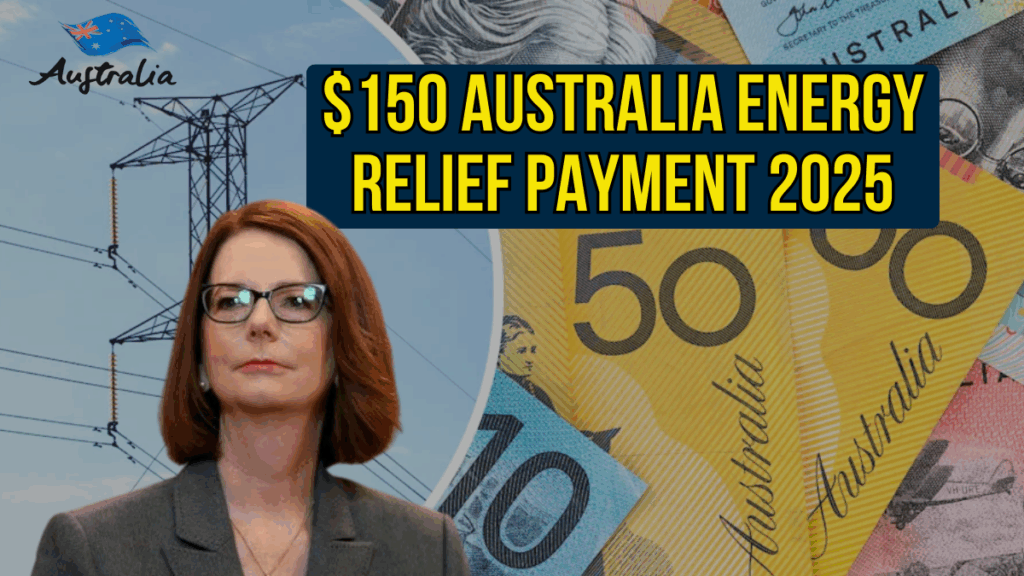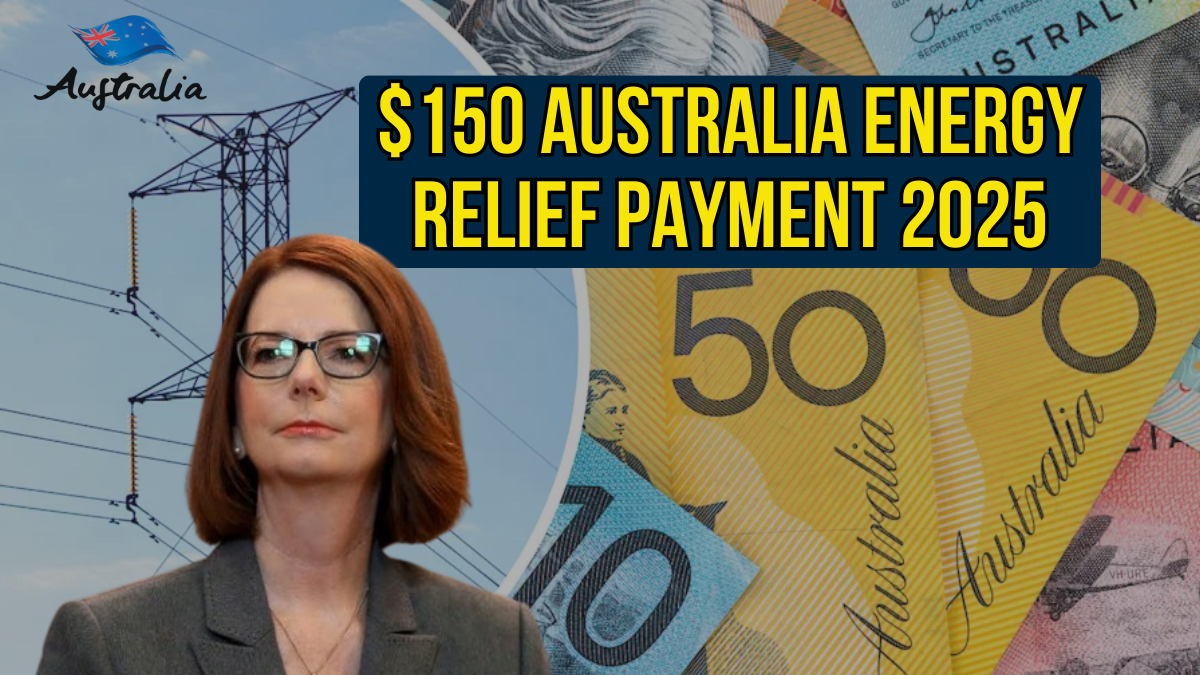The Australian government has confirmed plans to support households and small businesses facing rising electricity costs through the $150 Australia Energy Relief Payment 2025. This rebate, part of a $1.8 billion energy relief package, will reduce power bills for eligible residents. Payments are expected to be reflected directly in electricity bills between September and December 2025, with some states and territories also offering additional rebates.

This initiative ensures that both low-income households and small businesses receive targeted financial relief, especially during a time when energy prices are a significant burden on family budgets and operational costs.
What Is the $150 Australia Energy Relief Payment 2025?
The Energy Relief Payment 2025 is a one-off rebate designed to cut electricity costs for Australian households and small businesses. Instead of requiring separate applications, the government has structured the payment to be delivered automatically through energy retailers.
- Base Rebate: $150 applied directly to electricity bills.
- Additional Relief: Some eligible households and businesses may receive $300–$325 depending on state or territory initiatives.
- Delivery Timeline: Between September and December 2025.
For residents in embedded networks (villages, apartments, caravan parks, and community housing), a separate application may be necessary if the credit does not appear on bills automatically.
Centrelink Energy Relief Benefit 2025: Overview
Detail |
Information |
|---|---|
Benefit Name |
Australia Energy Relief Payment 2025 |
Authority |
Government of Australia |
Country |
Australia |
Year |
2025 |
Category |
Finance / Energy Relief |
Rebate Amount |
$150 (with potential additional $300–$325 in some states) |
Eligibility |
Low-income families, small businesses |
Payment Timeline |
September–December 2025 |
Mode of Delivery |
Applied directly to electricity bills via energy retailers |
Consumption Limit |
Under 150 MWh annually |
Official Website |
Who Is Eligible for the $150 Energy Relief Payment?
Eligibility for the rebate is based on income status, energy consumption, and residency.
Households
- Low-income families with an active electricity account.
- Concession card holders, including pensioners, veterans, and those on government benefits.
- Residents living in embedded networks may need to apply separately.
Small Businesses
- Businesses with annual electricity consumption below 150 MWh.
- Registered with an eligible retailer or embedded network operator.
How Will the $150 Payment Be Provided?
The relief will be applied automatically to electricity bills for most households and small businesses.
Process:
- No application required for most residents.
- Credit will appear on eligible electricity accounts.
- Households in embedded networks may need to apply manually via their network provider.
- If the payment does not appear, consumers should contact their energy provider.
Energy Relief Payment: Key Points for 2025
- Automatic for most: Households and small businesses will see the rebate applied without paperwork.
- Embedded networks: Applications may be required for apartments, caravan parks, and community housing.
- Consumption cap: Eligibility is restricted to those consuming less than 150 MWh annually.
- Supplementary support: States and territories may provide extra rebates alongside the federal payment.
- Purpose: To reduce financial stress caused by rising electricity bills and ensure affordable access to energy.
Why the Energy Relief Payment Matters
Electricity bills are among the fastest-growing household expenses in Australia, affecting not only families but also small businesses. By introducing the $150 relief payment, the government aims to:
- Lower the immediate financial burden on families.
- Support small businesses that face high operating costs.
- Encourage energy affordability and stability across all states.
- Protect vulnerable Australians, including pensioners and concession card holders.
Disclaimer on Energy Relief Payments
While the $150 Australia Energy Relief Payment 2025 is confirmed, the exact disbursement dates and additional state-based rebates may vary. Households should not rely solely on third-party information and are advised to:
- Check electricity bills regularly.
- Confirm with energy providers if the rebate has not been applied.
- Monitor official updates on energy.gov.au.
Short Summary: $150 Australia Energy Relief Payment 2025
Detail |
Information |
|---|---|
Payment Name |
$150 Energy Relief Payment 2025 |
Funded By |
$1.8 billion government package |
Eligibility |
Low-income households, concession card holders, and small businesses |
Annual Consumption Cap |
Less than 150 MWh |
Amount |
$150 (plus $300–$325 in some states) |
Payment Window |
September–December 2025 |
Mode of Payment |
Applied to electricity bills automatically |
Official Website |
FAQs About $150 Energy Relief Payment 2025
1. What is the energy consumption limit for eligibility?
Households and businesses must consume less than 150 MWh annually.
2. How much is the rebate under the 2025 Energy Relief scheme?
The base rebate is $150, with additional $300–$325 possible depending on state/territory programs.
3. Do I need to apply for the rebate?
No. The payment will be applied automatically to bills, except for those in embedded networks, who may need to apply separately.
4. When will the $150 rebate be applied?
Between September and December 2025, depending on your energy provider and state.
5. Where can I find official updates?
On the Australian government’s official energy portal: energy.gov.au.
Conclusion
The $150 Australia Energy Relief Payment 2025 provides direct and meaningful support to households and small businesses facing electricity cost pressures. With a $1.8 billion national fund, this initiative ensures that eligible consumers benefit without needing to go through a lengthy application process.
For most households, the rebate will appear automatically on bills, while those in embedded networks should apply separately. By easing energy costs, the scheme strengthens affordability, reduces financial stress, and ensures Australians can manage their household and business expenses more effectively.
For More Information Click HERE




